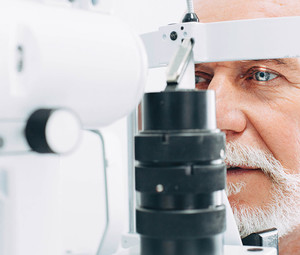Featured
Table of Contents

Regular eye evaluations are vital for keeping good vision and finding potential eye wellness problems early. Nonetheless, the frequency of these tests can vary dramatically based upon a person's age, way of life, and total health and wellness. Understanding the advised schedule for eye examinations can help make sure that people of all ages get appropriate care and monitoring for their eye health and wellness.
Infants and Toddlers (0-2 Years)
For young children and infants, eye examinations are critical for identifying any type of potential vision problems beforehand. The American Academy of Ophthalmology suggests that a youngster's first eye exam ought to take place at around six months old. Throughout this first browse through, the eye treatment specialist will certainly evaluate the youngster's visual growth and check for any kind of apparent eye problems.Following this very first exam, it is advised that youngsters have one more eye exam at age three. This browse through will concentrate on examining the kid's overall visual function, consisting of eye positioning and the ability to track objects. If no issues are detected, the following test must be set up before the child starts institution, typically around age 5 or six.
School-Aged Kids (6-18 Years)
Once children reach school-age child, normal eye tests must be scheduled each to two years. Vision is crucial for discovering and growth, and several schools conduct vision screenings. These screenings do not replace a detailed eye exam by an eye treatment expert.For youngsters associated with activities or sporting activities requiring considerable visual focus, annual eye exams may be advisable. Furthermore, if a kid shows signs of vision problems-- such as difficulty checking out, scrunching up your eyes, or regular headaches-- a browse through to the eye physician should be set up asap.
Youthful Grownups (19-39 Years)
Young grownups commonly have less vision modifications than older age teams, but normal eye exams continue to be vital. The general suggestion is to set up an eye examination every two years during this duration. However, individuals with particular danger aspects-- such as a household background of eye condition, diabetic issues, or those that put on get in touch with lenses-- ought to consider yearly eye examinations.Furthermore, those that spend considerable time on digital devices may experience digital eye strain. If signs such as dryness, exhaustion, or blurred vision occur, it might be a good idea to see an eye care professional quicker.
Adults (40-64 Years)
As people go into midlife, the probability of developing vision troubles boosts. Adults aged 40 to 64 must schedule eye examinations each to 2 years. This age might begin to experience presbyopia, an all-natural age-related condition that makes it testing to concentrate on close items. Eye exams can likewise aid find various other common age-related conditions such as glaucoma, cataracts, and macular deterioration.If people in this age have danger aspects such as high blood pressure or diabetic issues, they may call for more regular examinations to check their eye health closely.
Seniors (65 Years and Older)
For senior citizens, regular eye exams become also extra crucial. The American Optometric Association suggests that individuals matured 65 and older have an eye exam at least once a year.Conclusion.
Comprehending the appropriate timetable for eye tests based on age is crucial for keeping optimum eye wellness throughout life. By sticking to these standards and seeking advice from with an eye care expert, individuals can take aggressive actions toward maintaining their vision and overall health and wellness.Table of Contents
Latest Posts
Experience Coastal Elegance at Deauville Inn
Published en
1 min read
Choosing the Right Place: What to Take into consideration for Wedding Celebrations, Conferences, and Events
Published en
1 min read
Picking the Right Venue: What to Consider for Wedding Events, Meetings, and Occasions
Published en
1 min read
More
Latest Posts
Experience Coastal Elegance at Deauville Inn
Published Mar 25, 25
1 min read
Choosing the Right Place: What to Take into consideration for Wedding Celebrations, Conferences, and Events
Published Mar 18, 25
1 min read
Picking the Right Venue: What to Consider for Wedding Events, Meetings, and Occasions
Published Mar 10, 25
1 min read